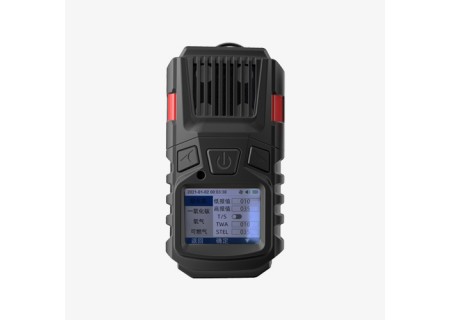IoT sensors for buildings

IoT sensors have advanced data collection and processing capabilities and are important for improving the productivity, safety and sustainability of construction sites.
These cutting-edge technologies are reshaping the entire process of construction projects, from structural monitoring to environmental management. This article takes an in-depth look at five important applications of IoT sensors in the construction industry, highlighting their benefits and potential to revolutionize the industry.
Introduction to IoT sensors for buildings
In recent years, the construction industry has achieved major technological breakthroughs that have improved productivity, safety and project management. The use of IoT sensors in buildings is a major advancement that is getting a lot of attention. Equipped with a variety of technologies, these sensors can collect, analyze and monitor data in real time, changing the way construction projects are planned, executed and managed.
IoT sensors are small wireless devices that can be embedded in building materials, equipment and even workers' clothing. They are mainly used to collect and send important data related to various areas of construction projects. This information includes temperature, humidity, pressure, vibration, strain, noise levels and more.
The basic purpose of using IoT sensors in buildings is to achieve real-time monitoring and analysis of key data. This enables project managers, contractors and other stakeholders to make informed decisions, detect problems early and take corrective action quickly. IoT sensors improve security, optimize resource allocation and improve overall project efficiency by providing accurate and up-to-date information.
The integration of IoT sensors in buildings can improve procedures, reduce hazards and increase productivity. However, it is also critical to address issues such as data management, security and sensor system compatibility. As technology advances, IoT sensors are expected to play an important role in determining the future of the construction industry, enabling smarter, safer, and more sustainable construction processes.
Equipment monitoring and maintenance
International construction projects require specialized knowledge, careful planning, and supervision and maintenance of equipment. An example would be the construction of a bridge connecting Country A to Country B, which requires the use of large equipment such as cranes, pile drivers, and concrete pumps. Also develop a strong equipment oversight and maintenance plan to ensure the project runs smoothly.
The machines are equipped with IoT-enabled sensors that collect real-time data on variables such as temperature, vibration levels and fuel usage. Equipment supervisors keep an eye on the functionality and health of the equipment from a central control room, where this data is passed on.
Project leaders can leverage advanced data analytics to see trends, patterns, and potential issues that may impact functionality. This predictive approach maximizes equipment reliability, reduces downtime and increases overall project efficiency.
When conducting business across national borders, it is critical to comply with local laws and regulations. To ensure that all equipment maintenance operations meet the unique needs of each country, a dedicated team of equipment supervisors and local technicians familiar with the regulatory environment in both countries is needed.
They conduct routine inspections to ensure equipment complies with local safety regulations and keep detailed maintenance records for audit needs. Construction companies demonstrate their dedication to international standards and build strong ties with local governments by strictly adhering to local laws. This helps minimize fines or delays resulting from non-compliance.
In conclusion, a professional and thorough approach is essential for the proper management and maintenance of equipment in international construction projects. Construction companies can collect real-time data by integrating IoT-enabled sensors for proactive monitoring and predictive maintenance, preventing downtime, identifying possible failures before they become critical, and increasing project efficiency.
Water leakage detection
Sensors in the construction industry market, such as humidity and water detection sensors, are critical to ensuring the safety and effectiveness of structures.
Water leak detection sensors are used to stop and reduce water damage, which can lead to expensive repairs, structural damage and mold growth. IoT sensors can be used in construction projects to detect leaks early so that quick action can be taken to remediate the problem before it worsens. This protects the structure, reduces repair costs and ensures the safety of the occupants.
The real-time monitoring capabilities of smart water leakage detection sensors can promptly issue alerts or notifications to appropriate personnel in vulnerable areas, allowing for quick inspection and correction.
To centrally monitor and manage various sensors, streamline monitoring processes and enable predictive maintenance methods, sensors interact with building management systems and IoT platforms.
A pressure sensor can record changes in water pressure, which could indicate a leak, while a Temperature and Humidity Sensor can identify unexpected increases in humidity or changes in temperature, which could indicate a water-related problem.
If an anomaly is detected, these smart sensors immediately send an alert via wireless communication protocols such as Wi-Fi, Zigbee or LoRaWAN to the building management system or designated personnel, allowing immediate intervention and mitigation of damage.
Artificial intelligence algorithms, machine learning and wireless connectivity are improving sensor technology’s ability to identify water breaches by providing more precise findings.
To quickly detect water leaks, reduce maintenance costs, and ensure the safety of occupants, IoT sensors are being used in buildings. The future of these sensors is bright due to growing demand, technological developments and sustainability.
Energy management
According to a report from the Pacific Northwest National Laboratory, implementing IoT sensor technology can reduce a building's energy consumption by 10-30%. If applied to construction sites, the impact on energy savings would be significant, marking an important step towards more sustainable construction practices.
Real-time energy monitoring: IoT sensors can monitor energy consumption in real-time. Consider a construction site powered by a generator. Smart sensors can monitor generator fuel consumption, allowing site managers to plan refueling efficiently and avoid unplanned downtime.
Demand response and load management: IoT sensors help manage and balance energy demand through demand response programs. Imagine a construction site that operates primarily during the day. IoT sensors can identify energy demand patterns and reduce energy supply at night when demand is minimal, thus avoiding unnecessary energy consumption.
Occupancy-based lighting and HVAC control: IoT sensors can be used to optimize lighting and HVAC systems based on occupancy. Consider a scenario where lights and air conditioning systems automatically turn off when the last worker leaves the room. Motion sensors and occupancy sensors detect the presence of workers or occupiers in specific areas, and IoT sensors measure parameters such as power consumption, idle time and operational efficiency, enabling equipment efficiency monitoring.
IoT sensors can also monitor the performance of solar panels or wind turbines, track energy production and optimize the use of renewable energy, thereby promoting the integration of renewable energy. For example, if the performance of solar panels decreases on a cloudy day, the system can automatically switch to backup power to maintain a stable energy supply. These sensors can improve energy efficiency, reduce operating costs, and minimize environmental impact.
In summary, the value of IoT sensors in the construction industry is undisputed, especially considering their impact on energy management. Commercial buildings, including construction sites, consumed approximately 1.8 trillion British thermal units (Btu) of energy in 2020, according to the U.S. Energy Information Administration (EIA). Given that smart sensors may help save 10-30% of energy in commercial buildings, there is potential for energy savings of up to 540 trillion British thermal units.
Environmental monitoring
IoT sensors for environmental monitoring are vital for construction projects, ensuring compliance with environmental rules, maximizing resource utilization and reducing potential hazards. These sensors are designed to monitor a range of factors in real time and provide insightful information for decision-making.
IoT environmental monitoring sensors are typically connected to centralized systems that collect, process and analyze data in real time. Throughout the construction process, project managers can use this data to make informed decisions, streamline operations and ensure environmental sustainability.
Some basic smart environment monitoring sensors used in buildings include:
1.Types of air quality sensors: These sensors measure the concentration of pollutants such as carbon dioxide (CO2), sulfur dioxide (SO2), and particulate matter (PM2.5 and PM10) to assess air quality. For example, if high concentrations of PM2.5 are detected, measures such as reducing construction activities or deploying air purifiers can be taken to ensure worker safety.
2. Noise monitoring sensor: Excessive noise at the construction site will cause disturbance to surrounding areas and harm the health of workers. These sensors measure decibel levels in real time, helping construction managers schedule noisier jobs during less disruptive times or implement noise reduction measures like noise barriers or noise-canceling headphones for workers.
3. Vibration Sensors: Construction activities often generate vibrations that can cause damage to nearby buildings. Vibration sensors can monitor these vibration levels in real time, allowing managers to adjust construction methods or equipment usage to minimize harmful vibrations.
4. Temperature and Humidity Sensors: The durability and performance of certain building materials can be affected by temperature and humidity levels. These sensors can monitor environmental conditions to ensure proper storage and application of materials, such as concrete curing or paint drying.
5. Structural health monitoring sensors: These sensors measure factors such as strain, displacement and tilt in building structures, providing early warning of potential problems. For example, unusual movement or deformation detected by these sensors may indicate foundation instability, prompting necessary structural assessment or intervention.
5. Health and Safety
Health and safety in the construction industry is vital to protect workers from potential hazards and ensure a safe working environment.
According to statistics, the construction industry accounts for a large portion of workplace deaths and injuries worldwide.
For example, data from a global construction safety report shows that falls, crashes and entrapment incidents are the leading causes of fatalities in the construction industry.
To reduce these risks, construction companies implement various safety measures such as conducting comprehensive risk assessments, providing appropriate personal protective equipment (PPE), implementing safety training programs, and promoting a safety culture on construction sites.
Emerging trends in IoT sensors for buildings
The rapid development of IoT sensor applications is shaping the future of the construction industry. These innovative technologies are revolutionizing the way buildings are designed, constructed and operated.
IoT sensors are embedded in various building components, providing real-time data on structural integrity, environmental conditions and energy efficiency. With the help of advanced data analytics and artificial intelligence, these sensors enable proactive monitoring and predictive maintenance, resulting in improved safety, cost savings and sustainability.
In addition, IoT sensors play a vital role in the development of smart cities, and interconnected infrastructure can optimize resources. As the construction industry embraces these emerging trends.







-450x320.jpg)
-450x320.jpg)

-450x320.jpg)
